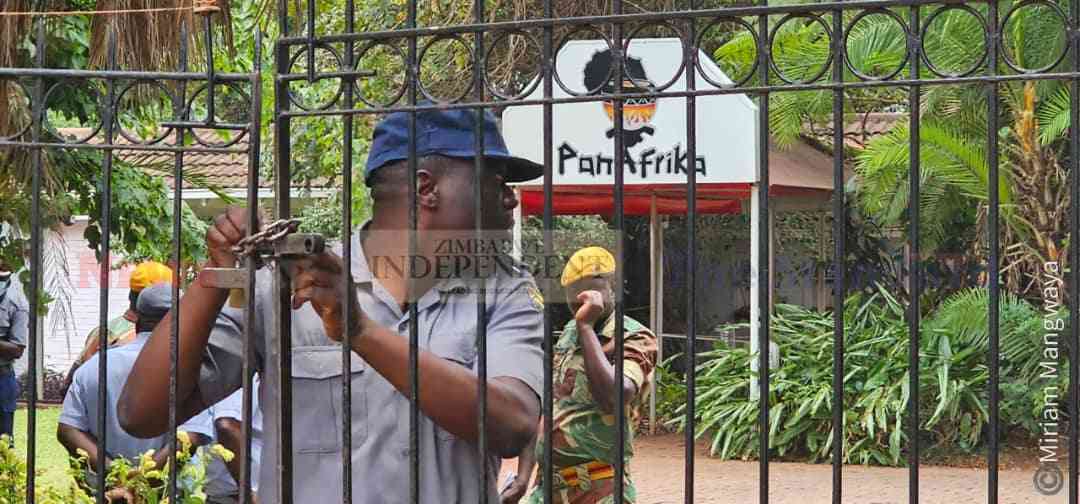
In 1992, water activist Arnold Payne pushed a wheelbarrow carrying 210 litres of water from Victoria Falls to Gwanda. He emptied the wheelbarrow and pushed the empty wheelbarrow all the way to Harare.
Payne was campaigning for the implementation of the Matabeleland Zambezi Water Project during what was a terribly dry year for Zimbabwe.
The 1991-92 drought remains one of the worst in Zimbabwe’s history, killing more than a million cattle and leaving more than five million people in need of food aid.
Water was in short supply around the country, especially in the drier southwestern parts, including Matabeleland and Bulawayo. It was in that context that Payne was campaigning for the construction of a pipeline to carry water from the Zambezi River to Bulawayo. The Matabeleland Zambezi Water Project, first mooted in 1912 has long been regarded as the lasting solution to Bulawayo and Matabeleland’s perennial water challenges.
Thirty years later, Matabeleland and Bulawayo continue to face serious water challenges. While Zimbabwe received good rains in the 2022-23 rainy season, the City of Bulawayo still faces unceasing water shortages, with a weekly 72-hour water-shedding regime in place. As dams across the country have spilled, Bulawayo’s supply dams, located in Matabeleland South have remained low on water.
Last month, the Zimbabwe National Water Authority reported that Bulawayo was part of only 8,5 % of urban areas in the country with less than 12-months’ supply of water. According to the Bulawayo City Council, the city’s supply dams were 59 % full as of March 2023, necessitating continued water rationing to avoid dire shortages in the coming year.
The water crisis has been compounded by power cuts at Bulawayo’s pump stations. In a statement on March 18, 2023, the City of Bulawayo Town Clerk Christopher Dube informed stakeholders that the water being pumped to reservoirs had been reduced due to power outages at Ncema and Fernhill water works.
Said the town clerk: “As a result, our six distribution reservoirs are failing to maintain adequate water levels, causing significant distress and inconvenience to the residents.”
- Tarakinyu, Mhandu triumph at Victoria Falls marathon
- Andrea The Vocalist, dreams big
- All set for the 2022 Econet Victoria Falls Marathon
- Econet Victoria Falls Marathon return a boon for tourism
Keep Reading
The impact of the power cuts at pumping stations has included prolonged periods without water for residents in violation of their rights as enshrined in Section 77 (a) of the Zimbabwean Constitution which states that every person has the right to “safe clean and potable water.” Ironically, this comes at a time when the world celebrates World Water Day on March 22, annually. Residents have been forced to rely on unsafe water sources raising concerns of outbreaks of diseases like diarrhea. In 2020, thirteen people died in Bulawayo following an outbreak of diarrhoea.
Given this dire situation, a lot needs to be done by stakeholders including residents, civil society, the local authority, and the government to address the water crisis in Bulawayo. This is important not only for the well-being and rights of citizens but also in honor and memory of heroes like Payne who spent much of their lives fighting for water rights for the people.
Evidence suggests that the resources to address the water crisis in Bulawayo are available, however, broken accountability chains are the reason this and similar service delivery crises persist. For many years, the government and the local authority have known of the water situation in Bulawayo, but precious little has been done to avert the periodic episodes of water scarcity. This failure has resulted in untold suffering for residents.
Adopting a human-rights-based approach to access to water in Bulawayo is key to setting things right. A key component of this is the restoration of the social contract between residents and those responsible for governing, and the strengthening of accountability chains. In terms of this approach, the government and the Bulawayo City Council as duty bearers have the mandate to ensure that adequate water is supplied to residents. Meanwhile, citizens as rights holders need to claim their rights and hold the Bulawayo City Council and the government accountable for any failures. Each party has a crucial part to play.
The more important role is that of the government and the Bulawayo City Council. It is time that the Bulawayo City Council and the government worked together to bring a long-lasting solution to the Bulawayo water crisis.
The Bulawayo City Council has shown initiative by reconstituting its Water Crisis Committee, which met for the first time on March 27, 2023. The local authority has also made efforts to source bowsers to supply residents, and has engaged the donor community to assist.
Meanwhile, the government has been working on the Gwayi-Shangani Dam with promises that the dam may be complete by the end of 2023. There is however a need for clarity, in the interest of accountability, on when water from the Gwayi-Shangani Dam will reach Bulawayo and a clear articulation of the extent to which it will address the current water challenges.
There is evidence that the government and the Bulawayo City Council are worried about the water crisis in Bulawayo despite their failure over many years to address the crisis.
While the government and the local authority hold responsibility for the availability of clean potable water, residents also have a role to play. This year, 2023, presents unique opportunities in this regard. The first opportunity residents have is the election anticipated for later this year.
There are opportunities to ensure that those who hold the levers of power or aspire to hold them put the water issue on their agendas and develop clear strategies to address the water crisis. The second, and most important opportunity, is that the Emmerson Mnangagwa administration has promoted a narrative that ending the water crisis in Bulawayo through the Gwayi-Shangani Dam is one of its most important accomplishments that differentiates it from the Robert Mugabe era.
Residents of Bulawayo working through civil society, and social movements can take advantage of this by putting pressure on the government to honor its commitments to complete the dam. While it is common knowledge that politicians sometimes make false promises and claims to lure voters, citizens can use their agency to encourage them to honor those commitments and make further commitments. Citizens need to emulate people like Payne, who did not give up on the fight for the right to water despite the lack of response from the government of the time.
Through a dialectical relationship between citizens (inclusive of civil society, associations, NGOs, etc.) on one end, and the government and the local authority on the other hand, the establishment of accountability relationships between those who govern and those who are governed is key to ending the water crisis in Bulawayo. Everyone has a role to play in ending the water crisis and honouring activists like Payne, and there are opportunities at the present moment that citizens can capitalise on.
*Zibusiso John Dube is the programmes and campaigns officer at Accountability Lab Zimbabwe. The views reflected in the article are the author’s and not necessarily those of the Accountability Lab and its networks.










